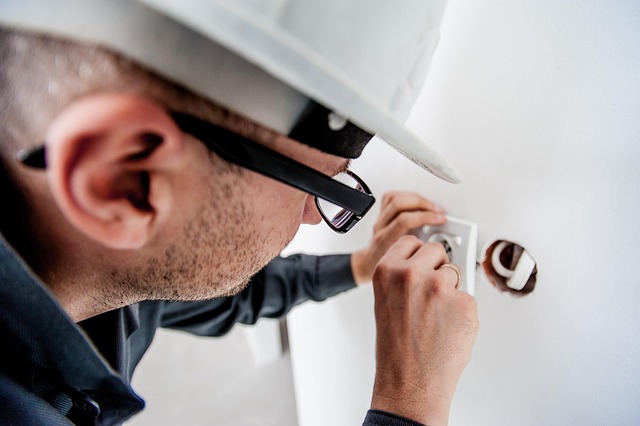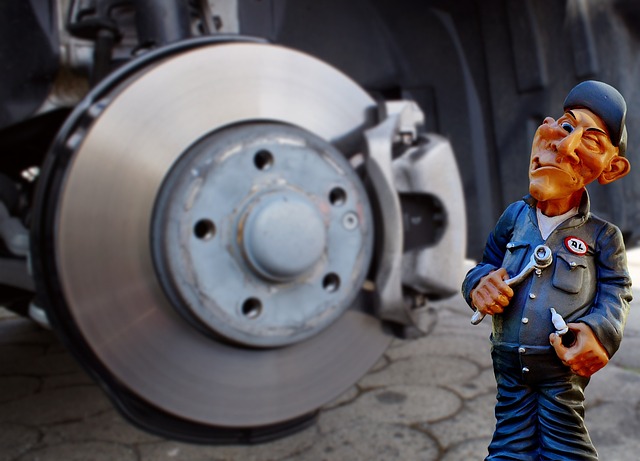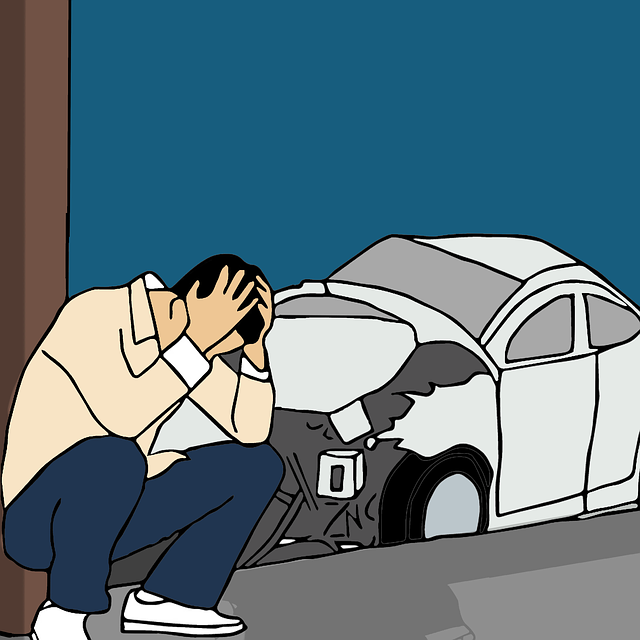Top Automotive Refinishing Brands and Future Trends in Paint Tech
In competitive automotive refinishing, industry leaders like Basf, PPG Industries, and AkzoNobel dom…….
Automotive refinishing is an intricate and artful process that transforms the exterior appearance of vehicles, restoring them to a like-new condition or creating unique, eye-catching designs. It involves a series of meticulous techniques, from surface preparation and painting to clear coating and finishing, ensuring not only a flawless aesthetic but also enhanced protection for the vehicle’s body. This article aims to delve into the world of automotive refinishing, exploring its various aspects, global impact, economic implications, technological innovations, regulatory landscape, challenges, and future prospects. By understanding this dynamic industry, readers will gain insights into one of the most crucial components of the automotive aftermarket, which not only influences vehicle aesthetics but also plays a significant role in personalizing and protecting transportation assets worldwide.
Automotive refinishing is a specialized process that involves the complete rejuvenation of a vehicle’s exterior finish. It encompasses several steps, each critical to achieving an exceptional final result. The core components include:
Surface Preparation: This initial stage involves thorough cleaning, degreasing, and sanding of the car body to ensure a smooth base for subsequent layers. It removes any contaminants, rust, or existing paint imperfections.
Priming: A primer is applied to seal the metal surface, provide additional protection against corrosion, and improve adhesion for the topcoat.
Painting: The art of automotive painting requires skilled technicians to apply precise amounts of base coat, color, and clear coat using airless or conventional spraying techniques. This step transforms the vehicle’s appearance and protects the paint from fading and chipping.
Clear Coating: After painting, a clear coat is applied to enhance durability, gloss, and protection. It creates a protective barrier, safeguarding the paint job from environmental factors.
Finishing Touches: Final finishing techniques include buffing, sealing, and adding protective coatings or wax to ensure a glossy, smooth finish.
Automotive refinishing has evolved significantly over the years, reflecting changing consumer preferences, technological advancements, and environmental considerations. Here’s a brief historical perspective:
Early Years: In the early 20th century, automotive finishes were relatively simple, often consisting of basic paint jobs. As cars became more accessible, the need for better protection and aesthetics led to the introduction of clear coats in the 1950s.
1960s-1970s: This period saw the rise of specialty paints, including metallic and pearl effects, adding a new dimension to automotive refinishing. Advanced sanding techniques and improved paint technologies enhanced the quality of finishes.
1980s-1990s: The focus shifted to durability and environmental friendliness. Water-based paints and polyurethanes became prevalent, offering better coverage, faster drying times, and reduced VOC (Volatile Organic Compound) emissions.
Modern Era: Today’s automotive refinishing industry boasts cutting-edge technologies, including advanced spraying systems, computer-aided design for custom finishes, and eco-friendly materials. These innovations ensure not only superior aesthetics but also increased sustainability.
Automotive refinishing plays a pivotal role in several aspects:
Aesthetics: It allows vehicle owners to personalize their cars with unique colors, designs, and finishes, making them stand out on the road.
Protection: The protective layers prevent paint damage from UV rays, bird droppings, tree sap, and other environmental factors, prolonging the car’s overall lifespan.
Resale Value: A well-maintained, refinished vehicle can command a higher resale value, making it an attractive option for those looking to upgrade or sell.
Automotive refinishing is a global industry, with significant variations in techniques, preferences, and market dynamics across regions. Here’s a glimpse into its international impact:
North America: Known for its advanced automotive industry, North America embraces cutting-edge technologies and trends in refinishing. Customization and high-end finishes are popular, driven by a culture that values personalization.
Europe: European markets prioritize environmental sustainability and eco-friendly practices. Water-based paints and low-VOC coatings are widely adopted, reflecting the region’s commitment to green initiatives.
Asia Pacific: This region, including countries like Japan and South Korea, is witnessing rapid growth in automotive refinishing due to increasing car ownership and a growing preference for premium finishes.
Emerging Markets: Countries in Latin America, Africa, and parts of Asia are experiencing rising demand for refinishing services, often driven by the need for cost-effective repairs and restorations.
Several trends are currently influencing the global automotive refinishing market:
Customization: Vehicle owners worldwide are seeking unique, personalized finishes, leading to an increase in custom painting and graphic design services.
Sustainability: There is a growing emphasis on environmentally friendly products and processes, encouraging the use of water-based paints, bio-based materials, and eco-conscious clear coats.
Digitalization: Digital technologies, including CAD (Computer-Aided Design) software and advanced spraying systems, are revolutionizing refinishing, allowing for precise applications and intricate designs.
Online Refinishing Services: E-commerce platforms offer DIY automotive refinishing kits, making it easier for enthusiasts to perform their own repairs and customizations.
The global automotive refinishing market is substantial and growing. According to a 2022 report by Grand View Research, the market size was valued at USD 149.8 billion in 2021 and is expected to expand at a CAGR (Compound Annual Growth Rate) of 6.5% from 2022 to 2030. This growth can be attributed to several factors:
Increasing Vehicle Production: Rising global vehicle production drives the demand for refinishing services, as new cars require initial finishing or repairs.
Personalization and Customization: Consumers’ desire for unique vehicles fuels the market, pushing suppliers to offer a wide range of customization options.
Aftermarket Growth: The growing preference for aftermarket modifications, including paint jobs, contributes significantly to market expansion.
The automotive refinishing industry is characterized by:
Diverse Supply Chain: It involves a network of suppliers for raw materials, equipment, and specialized services, creating a complex yet interconnected ecosystem.
Regional Disparities: Market share varies across regions, with established markets like North America and Western Europe holding significant portions, while emerging markets are witnessing rapid growth.
Mergers and Acquisitions: Strategic partnerships and mergers between refinishing specialists and automotive giants are common, allowing for technology sharing and market expansion.
Automotive refinishing has a substantial economic impact:
Job Creation: It supports numerous jobs, from skilled technicians to sales personnel and support staff, contributing to local economies.
Revenue Generation: Service centers and specialty shops generate significant revenue from refinishing, providing additional income streams for automotive businesses.
Induced Spending: The industry stimulates related sectors, such as auto parts suppliers, paint manufacturers, and car wash services, leading to broader economic benefits.
The field of automotive refinishing has witnessed remarkable technological advancements, enhancing efficiency, quality, and sustainability. Some notable innovations include:
Waterless Painting: This technique eliminates the need for water-based diluents, reducing drying times and minimizing environmental impact. It employs solvent-based paints for faster production.
Automated Spraying Systems: Advanced robotic and automated spraying systems offer precise paint application, consistent coating thickness, and improved productivity.
Computer-Aided Design (CAD): CAD software allows technicians to create custom designs, streamline the planning process, and achieve intricate finishes with greater accuracy.
Nanotechnology in Coatings: Nanoparticles enhance coat durability, scratch resistance, and UV protection, providing superior long-term performance.
Clear Coat Formulations: Improvements in clear coat formulations offer better gloss retention, faster curing times, and enhanced resistance to yellowing.
Technology will continue to play a pivotal role in shaping the future of automotive refinishing:
Artificial Intelligence (AI): AI-powered systems can optimize paint mixing, predict finish performance, and automate quality control processes, increasing efficiency and reducing waste.
3D Printing: 3D printing technology may be utilized for creating custom car parts, allowing for intricate designs and personalized touches.
Sustainable Solutions: The industry will further embrace eco-friendly practices, such as biodegradable paints, solvent-free coatings, and closed-loop recycling systems.
However, technological advancements also present challenges:
Cost Implementation: Adopting new technologies can be expensive, requiring significant investments in equipment and training.
Skills Gap: As technology evolves, there is a risk of a skills gap among technicians, necessitating ongoing training and education.
Regulatory Compliance: Keeping up with changing environmental regulations and safety standards can be complex, especially for smaller businesses.
Automotive refinishing is subject to various policies and regulations worldwide, ensuring product safety, environmental protection, and consumer rights. Key considerations include:
VOC Emissions: Many countries have strict regulations regarding volatile organic compound (VOC) emissions from automotive finishes, encouraging the use of low-VOC or water-based paints.
Product Safety: Regulators set standards for the toxicity and safety of paint chemicals, ensuring they do not pose a risk to consumers or the environment.
Disposal and Recycling: Legal requirements mandate proper disposal and recycling practices for automotive finishes, minimizing waste and environmental impact.
Regulatory compliance varies across regions:
North America (NHTSA): The National Highway Traffic Safety Administration (NHTSA) sets standards for vehicle safety, including emission controls and product regulations.
Europe (REACH): The Registration, Evaluation, Authorization, and Restriction of Chemicals (REACH) regulation requires manufacturers to assess the risks associated with their chemicals, ensuring safe use.
Asia Pacific (APEC): The Asia-Pacific Economic Cooperation (APEC) countries collaborate on environmental standards, including those related to automotive refinishing.
Automotive refinishing businesses must adopt strategic approaches to navigate the regulatory landscape:
Stay Informed: Keeping up with changing regulations is crucial. Regularly reviewing industry publications and consulting with legal experts ensures compliance.
Product Certification: Obtaining certifications, such as Green Seal or EcoLogo, demonstrates a commitment to sustainability and can enhance market reputation.
Supply Chain Management: Businesses should ensure that their suppliers also adhere to relevant regulations, maintaining transparency throughout the supply chain.
The automotive refinishing industry encounters several challenges:
Labor Shortages: Skilled technicians are in high demand, leading to labor shortages, particularly in regions with growing refinishing markets.
Costly Raw Materials: Fluctuating prices of raw materials, especially paints and clear coats, can impact profitability, requiring careful inventory management.
Environmental Concerns: While the industry has made strides towards sustainability, concerns about waste generation, chemical disposal, and environmental impact remain, prompting continued innovation.
To address these challenges:
Training Programs: Governments and industry associations should collaborate on comprehensive training programs to address labor shortages and ensure skilled technicians.
Sustainable Sourcing: Businesses can explore sustainable sourcing options, such as partnering with eco-conscious paint manufacturers, to reduce environmental impact.
Waste Management: Implementing efficient waste management systems, including recycling and closed-loop recycling, can minimize waste generation and reduce costs.
A luxury car dealership in the United States sought to offer its customers unique customization options. They partnered with a specialized refinishing company to develop an extensive custom paint program. The case study highlights:
Challenge: Creating intricate, one-of-a-kind designs that meet high-quality standards while ensuring long-term performance.
Solution: Using advanced CAD software, technicians designed unique patterns and colors tailored to customer preferences. They employed waterless painting techniques for faster production and reduced environmental impact.
Outcome: The program became a significant selling point, attracting tech-savvy buyers seeking personalized luxury experiences. The high-quality finishes enhanced the dealership’s reputation, leading to increased sales and customer satisfaction.
A large European automotive manufacturer implemented an eco-friendly refinishing initiative to reduce its carbon footprint. The strategy included:
Transition to Water-Based Paints: Shifting from solvent-based paints to water-based alternatives significantly reduced VOC emissions and improved indoor air quality during application.
Closed-Loop Recycling: They established a closed-loop recycling system for clear coat waste, minimizing environmental impact and creating a sustainable supply chain.
Training and Awareness: The company invested in training programs to educate employees about sustainable practices, ensuring widespread adoption and consistent results.
Industry Recognition: This initiative earned the manufacturer several sustainability awards, enhancing its brand image as an environmentally responsible automaker.
The future of automotive refinishing holds exciting possibilities:
Electric Vehicle (EV) Refinishing: With the rise of electric vehicles, new considerations for refinishing arise, including specialized coatings to protect against corrosion and unique design opportunities.
Virtual Design and Customization: Virtual reality (VR) and augmented reality (AR) technologies will enable customers to visualize custom finishes before committing, enhancing the personalized experience.
Smart Finishes: The development of “smart” paints with self-healing properties or adaptive colors could revolutionize refinishing, offering enhanced protection and aesthetics.
To capitalize on future opportunities:
Research and Development (R&D): Investing in R&D is crucial for staying ahead of industry trends and developing innovative solutions to meet evolving consumer demands.
Digital Transformation: Adopting digital technologies across the business, from design to production, will improve efficiency, enable customization, and enhance customer engagement.
Sustainability as a Competitive Advantage: Embracing sustainability practices can differentiate businesses, attract environmentally conscious consumers, and gain a competitive edge in the market.
Automotive refinishing is a dynamic industry that continues to evolve with technological advancements, shifting consumer preferences, and environmental considerations. From personalized custom jobs to sustainable practices, the future holds immense potential for innovation and growth. By staying informed about market trends, embracing new technologies, and addressing regulatory challenges, businesses in this sector can thrive while contributing to a more sustainable automotive landscape.

In competitive automotive refinishing, industry leaders like Basf, PPG Industries, and AkzoNobel dom…….

The automotive refinishing industry is undergoing a significant evolution driven by emerging technol…….

Automotive refinishing is an art that restores damaged vehicle surfaces to their original condition…….

The automotive refinishing industry is evolving rapidly with advanced paint technologies. Nano-techn…….

Temperature dramatically affects automotive refinishing, with warmer climates speeding up drying but…….

In automotive refinishing, surface preparation is a crucial step that involves thorough cleaning and…….

Automotive refinishing times vary from hours for minor repairs to weeks for severe damage, depending…….

Automotive refinishing goes beyond aesthetics in car repair, crucial for safety and protecting inves…….

The automotive refinishing industry has undergone a remarkable transformation due to technological i…….

Creating a safe work environment in automotive refinishing shops involves implementing multi-faceted…….